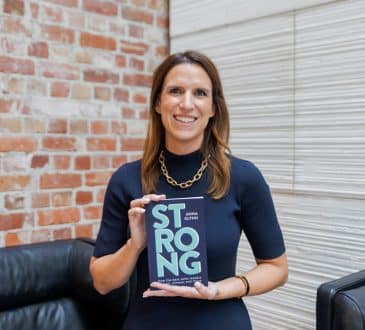The future of consultancy

As emerging technologies and the digital transformation open up new market space and opportunities, consultants need to reconfigure their approach and reject obsolete legacy models if they are to remain relevant to modern business. They must be seen as value creators in genuine partnerships with their clients, rather than just third-party service providers.
Success demands greater senior-level involvement
One of the big changes that the consultancy industry must make is to its business engagement model. Traditionally, consultants have engaged with clients via a pyramidal model in which senior partners occupy the narrow band at the top, their involvement in projects often stretching little beyond presenting the initial proposal, turning up at a few key meetings, and summing up the final results. The wider base of the pyramid consists of junior and mid-level consultants, who are not only tasked with carrying out the majority of the actual work, but are also the main day-to-day contact for the client.
This model worked when the consultancy was hired to undertake relatively generic activities, with the assumption that business processes that had been successfully rolled out at one company could simply be applied to another. As such, little senior involvement was required. However, as companies look to embrace new organizational practices and seek out disruptive ideas to provide competitive advantage, this model is increasingly untenable. Clients want demonstrable value creation, not just analysis and strategy. Increasingly, senior experience and high-level expertise will be demanded to ensure the fast and successful execution of projects.
Open consulting is key
There are other ways in which the traditional pyramid model needs to change, particularly in relation to how relevant expertise is accessed. For a long time now, many consultancies have relied too heavily on their own internal expertise to respond to client briefs, or have quickly tried to buy in relevant talent to cover gaps in their knowledge, and in the process, rapidly assembled teams that have often been poorly integrated. This ethos is driven by a desire to maximize margins and keep everything in-house, controlling internal practices by shunning outside inputs.
However, the future is about forging partnerships with subject-matter experts and specialist service providers through the creation of open consulting ecosystems. For a genuinely client-focused organization, the overriding imperative should be to provide the best possible expertise for each individual project. Given that clients are increasingly looking to exploit emerging technologies and find new ways to create value, it’s unrealistic to expect that all of the relevant knowledge and experience will be housed within one consultancy, no matter how big it is.
Establishing and nurturing complementary open consulting partnerships should be a key priority for the modern consultancy. With a lead consultancy that really understands how to run partner networks, working collaboratively with the most appropriate talents produces the most innovative solutions and the best results.
More skin in the game
The strength of the client relationship is paramount for a successful consultancy, and by involving seniors more deeply throughout projects, working peer-to-peer with client executives, a much stronger and potentially more value-adding bond can be formed. Rather than remaining at the strategic advisor level, the consultancy has increasing opportunities to become a business creation partner on specific projects.
The notion of putting more “skin in the game” to reflect a true partner relationship, rather than a client-contractor relationship, is not new, but in practice this has been limited by the extent of the consultancy’s role. If the consultancy is only providing advice, it is not really sharing the same commercial risks and rewards as the client. However, by collaborating on the creation of real products and services, risk/reward sharing works much better. Consultancies can not only develop new revenue streams, but also better understand clients and how to create much greater value for them.
To become co-creators, consultancies themselves need to develop new skills and partnerships in areas such as design, manufacturing and marketing. At the very least, they need to go beyond offering just strategic advice and insight to clients, and instead be ready to get involved in the actual creation and implementation of new products and services.
Even if the project is mainly advisory, it’s likely that value creation will increasingly become the metric against which consultancies are judged and paid, rather than hours or deliverables. Value is more difficult to define, but represents a more meaningful benchmark for how successful a project has been, and could potentially lead to greater rewards on both sides. Provided that value metrics are simple and measurable and do not involve an excessive time lag before they can be invoked, this type of fee model can be an effective way to underpin a genuine client-consultant partnership.
Connectors and navigators
Of course, it’s not just connections to partners or potential customers that a consultancy’s network provides – it’s depth of perspective as well. Being able to offer an “outside view” of a problem is one of the original reasons companies began working with consultancies in the first place – as the challenges clients face grow in complexity and the choices before them become myriad, having an organization at hand to help make sense of the world will be more important than ever.
The value that consultancies offer clients, particularly those looking to gain competitive advantage via innovation, will increasingly be based on the size and diversity of their global networks, and the power of the knowledge they contain. Disruptive change and breakthroughs occur when different perspectives and experiences from multiple industries are brought together in the context of problem solving. Going forward, clients will look to work with consultancies that can provide access to novel perspectives via depth of partnership expertise.
Consulting’s role as a trusted guide through confusing territory will also be more important than ever. The ubiquitous availability of data and opinions online – in tandem with the proliferation of new technologies – has created an information fog that clients have to wade through in search of a solution that’s right for them. Consultancies have a critical role to play in this process as navigators through this fog on the client’s behalf, shining a light on new processes and technologies that genuinely address their needs while rejecting blind alleys and dead ends.
Of course, not all consultancies are as agile as others. Legacy consulting’s desire to put clients into neat boxes, regardless of the market dynamics at play, can be seriously counterproductive and impede rather than promote progress. For today’s companies, moving rapidly to launch a new product or service to market could be much more important than spending six months perfecting it internally. This type of rapid workflow requires the consultancy to be firmly embedded with the client rather than operating at arm’s length. This is also another entry point for consultancies to become co-founders and co-creators of new products and services.
Embracing new technology is vital
One of the biggest changes affecting the future of consultancy is the application of technology to the research and analysis process. Traditionally, a lot of time and money has been expended on data handling and number crunching – gathering raw information, putting it into the correct format, and then producing facts and figures from it.
Data mining and analysis has undergone a revolution over the past few years, thanks to artificial intelligence (AI). It is vital that consultancy takes full advantage of the latest developments in AI and machine learning to make its research and insight generation processes quicker and more accurate, while freeing up junior consultants to do more meaningful work.
Another important way in which technology will change consultancies’ business practices is its enablement of remote working. One of the biggest impacts that the COVID-19 pandemic has had on the corporate world is the accidental creation of a mobile, distributed workforce at mass scale.
However, while it is possible for more work to be done virtually and outside the office, it is unlikely that consultancies will go completely remote. For instance, the nature of consulting work has always involved substantial time out of the office at client premises anyway, but it isn’t tenable to try to shift this part of the job completely online – face-to-face relationship building with clients will still be an important aspect of what consultancies do. Instead, it is likely that a shift will occur towards more collaborative in-office arrangements – such as hot-desking – combined with home working.
The future is disrupted
Ultimately, the real value that consultancies need to offer is in allowing clients greater access to their experience and subject-matter expertise. The intelligent and agile sharing of knowledge from across markets and practices, coupled with an approach that understands both the global picture and regional specificalities, as well as the ability to understand and integrate new technologies, should be central to the transformation of consulting’s operating model.
The consultancy of the future needs to be an entrepreneur as well as an advisor, helping clients to realize new growth in practice, not just plan for it.
Written by Rick Eagar.
Have you read?
# Best Citizenship and Residency by Investment Programs.
# Richest People in New York and Their Net Worth, 2022.
# The World’s Top 10 CEOs Over 70 Years Old.
# These are the world’s most and least powerful passports, 2022.
# Case Study: LVMH’s Bernard Arnault, Apple’s Tim Cook, and Elon Musk.
Add CEOWORLD magazine to your Google News feed.
Follow CEOWORLD magazine headlines on: Google News, LinkedIn, Twitter, and Facebook.
This report/news/ranking/statistics has been prepared only for general guidance on matters of interest and does not constitute professional advice. You should not act upon the information contained in this publication without obtaining specific professional advice. No representation or warranty (express or implied) is given as to the accuracy or completeness of the information contained in this publication, and, to the extent permitted by law, CEOWORLD magazine does not accept or assume any liability, responsibility or duty of care for any consequences of you or anyone else acting, or refraining to act, in reliance on the information contained in this publication or for any decision based on it.
Copyright 2024 The CEOWORLD magazine. All rights reserved. This material (and any extract from it) must not be copied, redistributed or placed on any website, without CEOWORLD magazine' prior written consent. For media queries, please contact: info@ceoworld.biz
SUBSCRIBE NEWSLETTER








